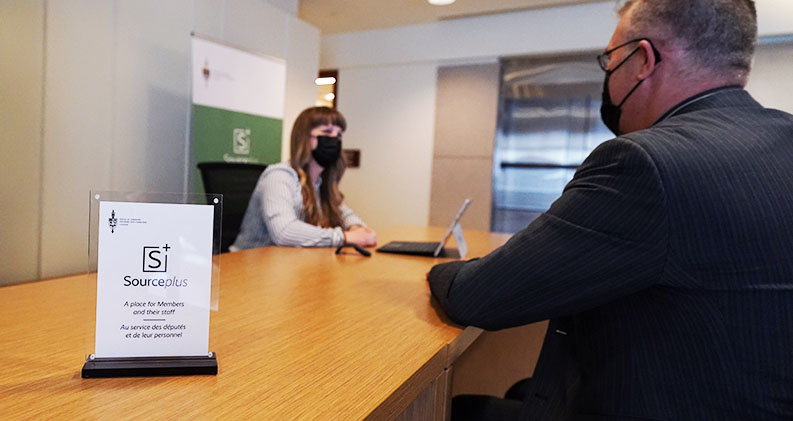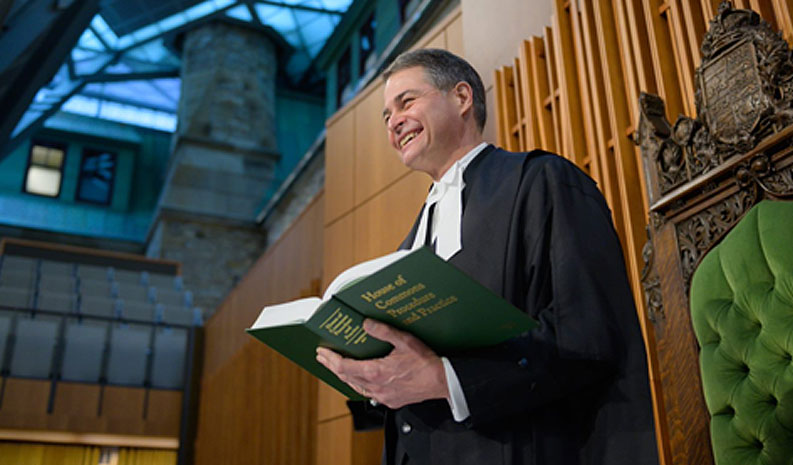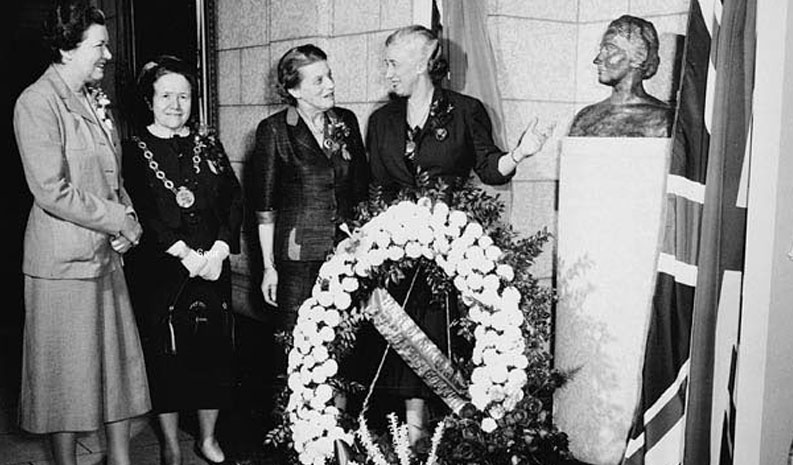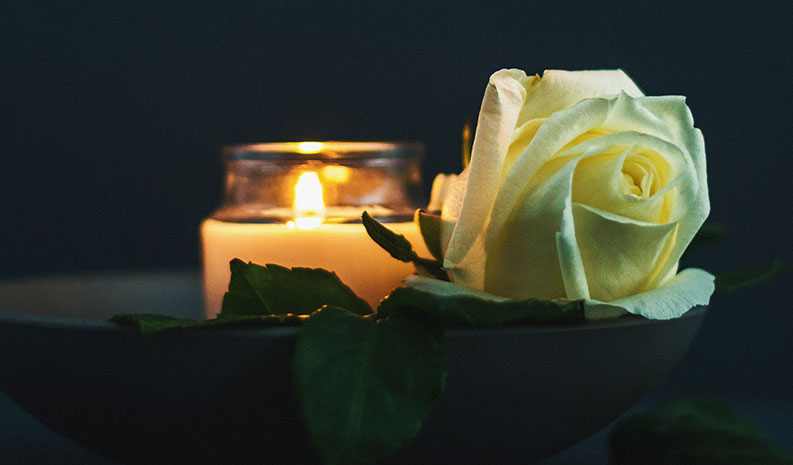Highlights from the Hill
The House Administration is constantly modernizing and adapting how it provides services and information to Members of Parliament, their employees, and House Administration employees; and 2021–2022 was no exception.
The pursuit of excellence
The House Administration proudly supports Members and the House of Commons by providing the services, infrastructure, and advice that Members need to do their work as legislators and representatives in the Chamber, in committees, in caucus, and at their offices on Parliament Hill and in their constituency.
Over the past year, Members carried out their parliamentary duties while continuing to adapt their practices to the COVID-19 pandemic. At the same time, the House Administration continued to look for ways to modernize and adjust how it assists Members, whether they are working remotely or on site. Following the general election, the support available to Members and their employees was offered both in person and virtually. Also, for the first time in the history of Parliament, all newly elected and re-elected Members were given the option of a virtual swearing-in ceremony.
Relying on the collective experience of its employees, the House Administration ensured that business would continue while also introducing new programs and enhancing services to Members. Building on work begun in the 2020–2021 fiscal year, the House modernized its security records management system and implemented new services to enhance Members’ safety both on and off the Hill. These include assessments, the provision of security equipment and advice, security awareness and training, as well as outreach with local police forces.
The opening of a new Parliament creates an opportunity to reflect on the way products and services can be delivered or enhanced. Throughout the past year, the House Administration challenged itself to become better at what it does. Continuous improvement remained a priority within the Administration’s ongoing efforts to deliver outstanding services to Members of Parliament. For example, Sourceplus (a multidisciplinary team providing on-site support to Members and their staff) played an integral role in onboarding new and re-elected Members after the last general election, while also helping those who were not re-elected ease out of parliamentary life.

Building an anti-racist culture
The Anti-Racism Subcommittee—an employee-led task force created as part of the Workplace Inclusion Program—published its first report this year. Drawing inspiration from the recommendations, the Administration added the core value of “inclusion” to its Strategic Plan, in a commitment to emphasize anti-racist behaviour and ensure an inclusive and diverse workplace.
The importance of safe on-site operations
The House continued to follow protocols from public health authorities to help limit the spread of COVID-19 in the workplace. Some preventative measures previously approved by the Board of Internal Economy were extended, such as the closing of the precinct to the public; the suspension of public tours and committee travel; and the mandatory use of masks for Members, their staff, House Administration employees, members of the Parliamentary Press Gallery, and parliamentary visitors.
Some of the services that were paused in the early days of the pandemic have resumed, with protective measures in place to ensure safety. Parliamentary activities in the Chamber and in committees continue to take place in a hybrid format.

A timeline of significant events
Dissolution of the 43rd Parliament
Did you know? Members’ offices—both in Ottawa and in their constituency—remain open during dissolution to allow Members and their staff to continue offering services to constituents.
44th general election
After a general election, new Members participate in an orientation program outlining the support and services available to them. The program’s delivery was adapted by the Administration in response to the pandemic. In keeping with public health directives, Members were able to participate in program activities either in person or virtually.

Swearing-in ceremonies for Members of Parliament
Before taking their seats and voting in the Chamber, Members take an oath or make a solemn affirmation of allegiance. In effect, Members are making a pledge to conduct themselves in the best interests of the country.
Opening of the 44th Parliament and election of the Speaker of the House of Commons
The election of a Speaker is the first item of business when Members assemble following a general election and, when the 44th Parliament opened, Members re-elected the Honourable Anthony Rota as Speaker.
Although Speakers may not participate in House debates, they still fulfill their role as Members by supporting their constituents.

Speech from the Throne
Her Excellency the Governor General, the Right Hon. Mary Simon, opened the new session of Parliament by reading the Speech from the Throne. This was the third throne speech read in the Senate of Canada Building, the Senate’s temporary home during the rehabilitation of the Parliament Building.

Interested in the history of the Speech from the Throne?
Women in Parliament
Following the 2021 general election, more women are sitting in the House than at any other time in Canadian history.
The year 2021 marked 100 years since the historic election of Agnes Campbell Macphail, the first woman Member of Parliament. Her win came two years after women gained the right to run in a federal election. She would remain the sole female Member of Parliament for 14 years until Martha Louise Black was elected in the 1935 federal general election. Macphail kept her seat until the general election of 1940, and paved the way for many other women in politics.

Significant progress for women in Canada's Parliament
Here are some of the pioneering women who have marked the evolution of our parliamentary institutions over the past hundred years:
-
1921
Agnes Campbell Macphail
First woman Member of the House of Commons
-
1930
The Hon. Cairine Reay Wilson
First woman Senator
-
1944
Cora Taylor Casselman
First woman to preside over sittings of the House
-
1957
Margaret Aitken
First woman appointed chair of a parliamentary committee
-
1972
Muriel McQueen Ferguson
First woman Speaker of the Senate
-
1980 and 1983
The Right Hon. Jeanne Sauvé
First woman Speaker of the House of Commons and first woman Governor General
-
1993
Jean Augustine
First visible minority woman elected to the House of Commons and first Black Canadian woman to serve as a federal minister of the Crown and Member of Parliament
-
1993
The Right Hon. Kim Campbell
First woman Prime Minister
-
2005
Audrey O’Brien
First woman Clerk of the House of Commons
-
2008
Dr. Andrea McCrady
First woman Dominion Carillonneur
-
2012
Sonia L’Heureux
First woman Parliamentary Librarian
-
2014
Johanna Mizgala
First woman Curator of the House of Commons
Honouring those who lost their lives to gender-based violence
Thirty years ago, legislation was passed to officially designate December 6 as the National Day of Remembrance and Action on Violence Against Women, when the National Day of Remembrance Act received all-party support. The Dominion Carillonneur performed a recital for White Ribbon Day, as it is informally known, honouring the victims of the École Polytechnique shooting in 1989.
